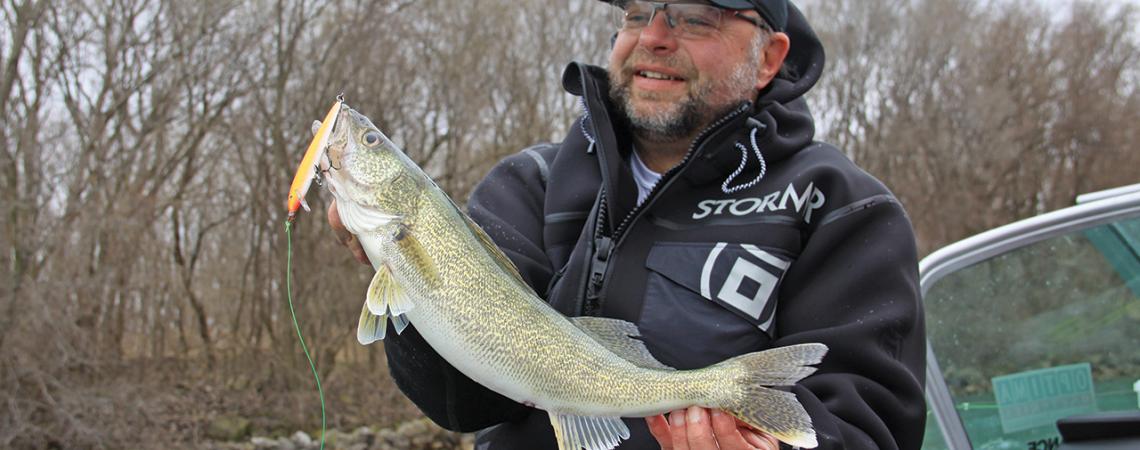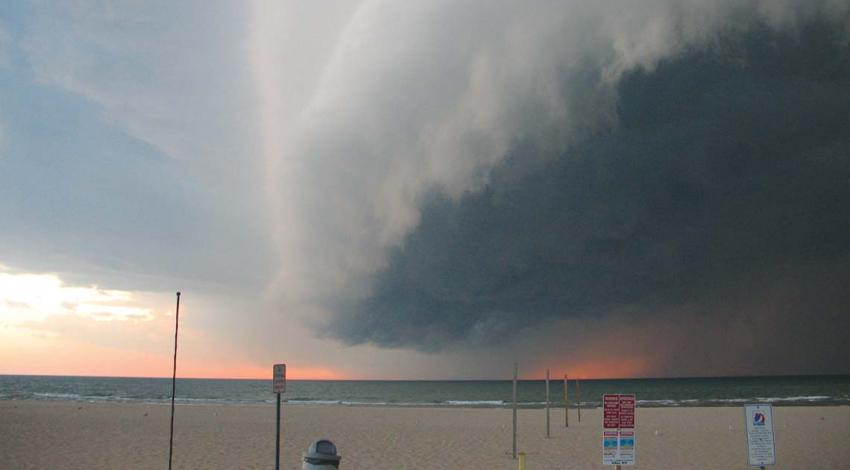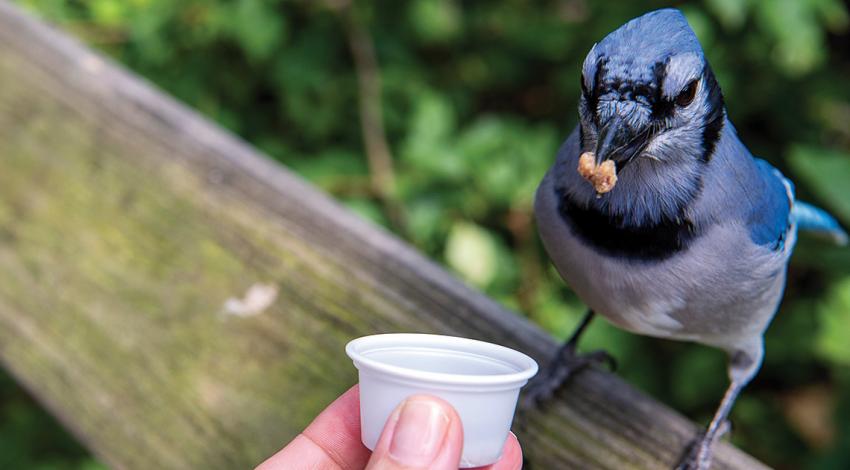Mark Martin with a typical Detroit River walleye. (Photo by Chip Gross)
I admit it: I’m hooked on fishing. Like most addicts, I like to believe I can quit at any time — just walk away. But deep down I know that’s not true. We fishermen even have an expression to explain our illness: “The tug is the drug.”
Last April, for instance, I was fishing the Detroit River, which is always cold in early spring. Even though the air temperature was in the low 50s that morning, high winds had 2-foot waves white-capping the 42-degree water, and it felt like winter.
Yet, I was still happy to be there. I’d been wanting to learn a specific fishing technique — hand-lining — for years, and I finally had my chance. To make it more of a treat, I had one of the best pro anglers in the business, veteran Mark Martin of Twin Lake, Michigan, and two of his pro staffers, Mike Schneider and Les Dennis, to show me the ropes. They were pre-fishing the river in preparation for an upcoming walleye tournament and had graciously invited me along.
“Hand-lining is an old-school method of trolling for river walleyes that’s been around for a century or more,” Martin says. “It’s so productive because it keeps the lures on or near the bottom, and that’s where the walleyes are.” Hand-lining, he adds, works especially well in murky water conditions, which is what anglers usually face during spring on the Detroit.
In hand-lining, a heavy, slender lead weight (12 to 24 ounces) is attached to a 4-foot wire leader, known as a “shank,” to take plastic, minnow-imitation lures to the bottom. The shank has a D-ring spaced about every 8 inches, and the lures attach to the D-rings via monofilament leaders. The main line, so as not to break, is stout 60-pound-test wire coated with clear plastic. But the line doesn’t attach to a traditional fishing rod and reel; rather, it stretches to a large, spring-loaded reel mounted near the front of the boat.
Once we were in position in about 20 feet of water, Martin stayed at the helm, while Schneider and Dennis dropped the trolling rigs over the side and began fishing from seats on opposite gunnels of the boat. Holding the line between a thumb and forefinger, they constantly felt for the bottom with the weight, then would lift the line just a foot or two as the reels took up any slack.
“Just keep repeating that motion — tap and lift, tap and lift — until you feel a fish hit,” Schneider says, letting me try. “When you do, bring the line in hand over hand and we’ll net the fish.”
I did as instructed, but never felt a fish of any kind bite, let alone a walleye. In fact, none of us caught anything that day. That’s the dirty little secret most weekend anglers don’t realize: Even pro fishermen get skunked occasionally. So take comfort in that, fellow addicted anglers. I do regularly. (Note: Martin informed me that the walleyes started biting later that week, after I’d left. What a surprise.)
Go-to guide
If you’d like to try hand-lining the Detroit River for walleyes this spring, Mark Martin recommends fishing guide Brad Smyth of Detroit Outdoor Adventures. Smyth can be reached by phone at 586-945-7429, or by e-mail at detroitoutdoors@gmail.com. His website is www.ifishdetroit.com.









